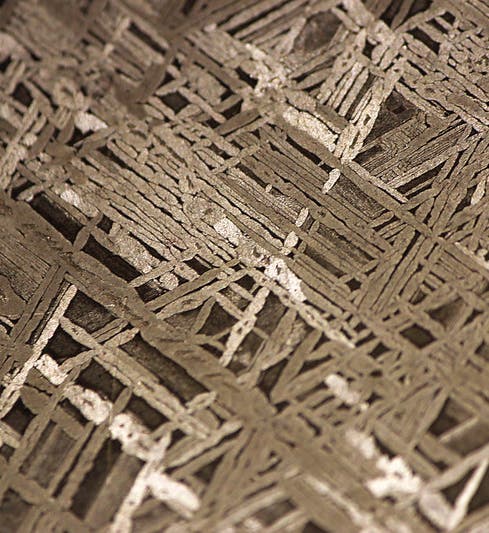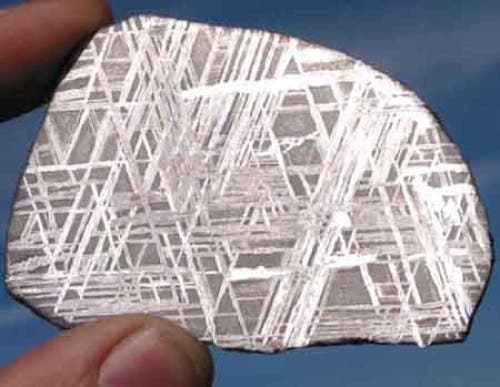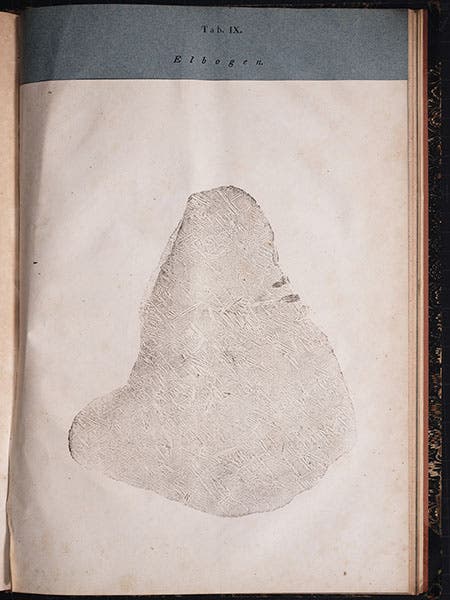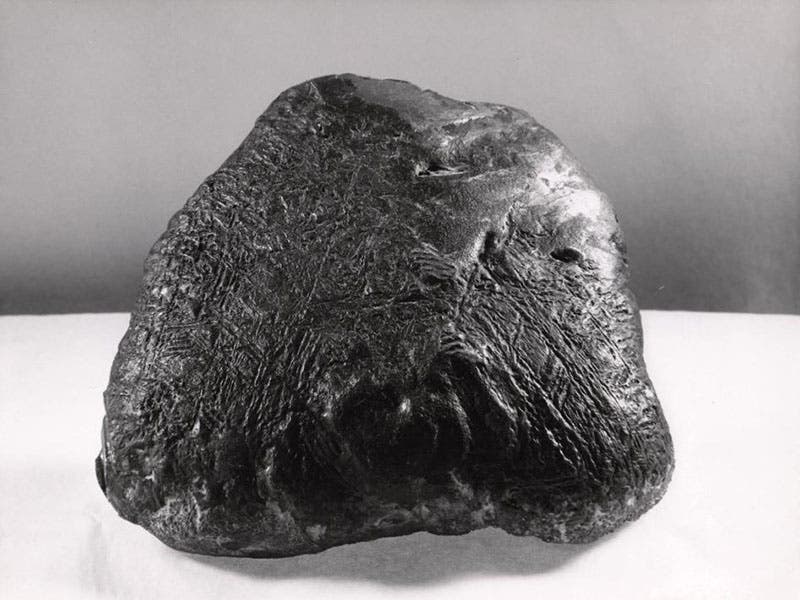Scientist of the Day - Aloys von Widmanstätten
Aloys von Widmanstätten, an Austrian printer and museum curator, was born July 13, 1753. You wouldn't think that someone called Widmanstätten would ever become a household name, but Aloys has become so, at least to planetary geologists, because of a find he made in 1808. He discovered that, if you polish an iron meteorite and then heat it with a torch, a pattern emerges that reveals the extraterrestrial origin of the meteorite. These patterns, once exposed, are quite appealing, even to the non-geologist, because of their striking hexagonal and triangular components. Our first and second images show meteorites that have been polished to reveal the patterns. Widmanstätten did not write a paper about his discovery but passed it on to colleagues in Vienna, who soon began calling the distinctive patterns “Widmanstätten patterns,” and the name has persisted to the present day. You can see many other examples of Widmanstätten patterns at this website.
In 1820, Karl Ritter von Schreibers published a book on meteorites, in which one of the plates shows a polished section of the so-called Elbogen meteorite, a plate apparently printed directly from the stone (third image). This was the very meteorite that Widmanstätten was working with when he made his discovery; some think he might have made the print himself. Von Schreibers was the first to use the term “Widmanstätten pattern” in print. We wrote a post on him once, where you can see some other quite lovely meteorite illustrations.
Occasionally, nature will reveal a Widmanstätten pattern all by herself. Such is the case with a meteorite found at Fort Stockton, Texas, in 1952, where the blowing sand has etched away the softer material to reveal the pattern on the outside of the stony iron (fourth image).
It was learned, not all that long ago, that an Englishman living in Italy, William Thomson, had made the same discovery about meteorite patterns in 1804, and had published it twice, in respectable journals, with images, well before Widmanstätten ever got interested in meteorites. Instead of using a torch on his meteorite samples, Thomson brought out the patterns by etching them with acid, a much superior technique for revealing the hidden structure. Clearly, Widmanstätten was preempted in every way and has no claim for priority in any facet of this. However, efforts to rename the pattern “Thomson figures” have not been successful. I guess once you have learned to say “Widmanstätten pattern,” you don’t want to give it up.
Originally published July 13, 2015; here revised, with added captions.
Dr. William B. Ashworth, Jr., Consultant for the History of Science, Linda Hall Library and Associate Professor emeritus, Department of History, University of Missouri-Kansas City. Comments or corrections are welcome; please direct to ashworthw@umkc.edu.









